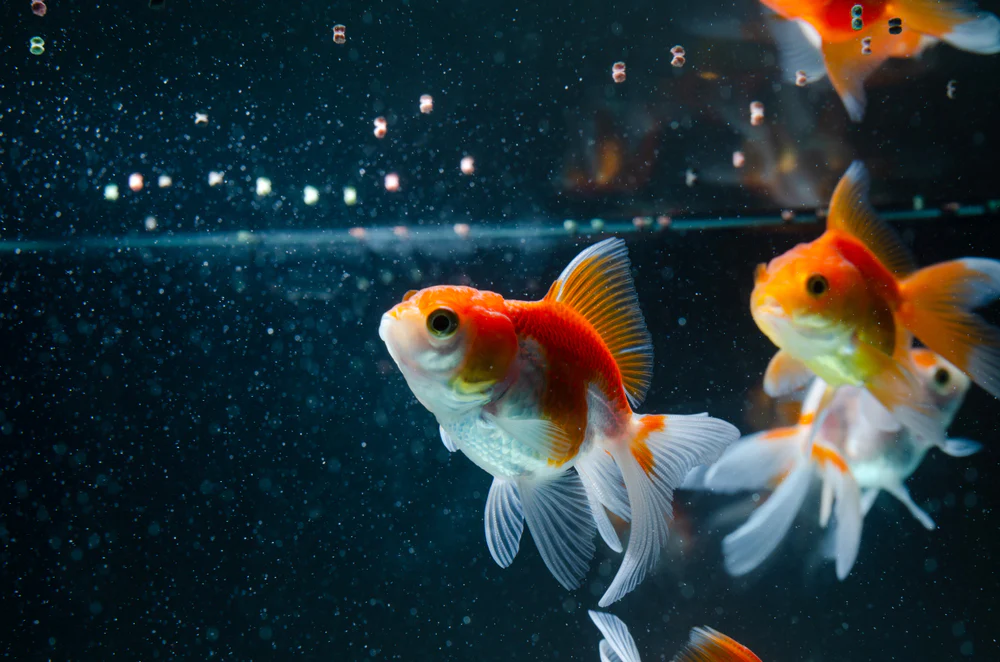Blogs
Maintaining a Balanced Feeding Routine: Understanding How Often to Feed Goldfish

As a goldfish owner, providing your beloved fish with the proper feeding routine is crucial for their health and well-being. Goldfish are fascinating creatures that require a delicate balance of nutrients and feeding schedules to thrive. In this comprehensive guide, we’ll explore the nuances of goldfish feeding, helping you establish a balanced routine and how often to feed goldfish that caters to your fish’s unique needs.
Understanding the Feeding Requirements of Goldfish
Goldfish are omnivores, meaning they consume a variety of plant and animal-based foods. Their dietary needs vary depending on age, size, and activity level. Juvenile goldfish, for instance, require more frequent feedings to support their rapid growth, while adult goldfish may need fewer but larger meals to maintain their energy levels.
Factors to Consider When Determining How Often to Feed Goldfish
When establishing a feeding routine for your goldfish, several factors come into play:
- Age and Size: Younger, smaller goldfish generally require more frequent feedings, while older, larger fish can be fed less often.
- Water Temperature: Goldfish’s metabolic rate is directly influenced by the water temperature, with higher temperatures leading to increased appetite and faster digestion.
- Tank Size and Stocking Density: The size of your goldfish tank and the number of fish it houses can affect the appropriate feeding frequency, as overcrowding can lead to increased competition for food.
- Activity Level: Active, energetic goldfish may require more frequent meals to sustain their higher energy expenditure.
The Importance of a Balanced Feeding Routine for Goldfish
Maintaining a balanced feeding routine is essential for your goldfish’s overall health and well-being. Proper nutrition supports their immune system, promotes growth and development, and helps prevent common health issues. Underfeeding or overfeeding can both have detrimental effects on your fish, so striking the right balance is crucial.
How to Establish a Feeding Schedule for Your Goldfish
To establish an effective feeding schedule, consider the following guidelines:
- Juvenile Goldfish: Feed 2-3 times daily, providing only the amount of food your fish can consume within 2-3 minutes.
- Adult Goldfish: Feed 1-2 times per day, again limiting the amount of food to what your fish can consume in 2-3 minutes.
- Adjust as Needed: Monitor your goldfish’s behavior and adjust the feeding frequency as necessary based on factors such as water temperature, tank size, and activity level.
Recommended Types of Food for Goldfish
Goldfish thrive on a varied diet that includes both plant-based and protein-rich foods. Some recommended options include:
- High-quality goldfish flakes or pellets
- Frozen or freeze-dried foods, such as brine shrimp, bloodworms, and daphnia
- Boiled or blanched vegetables, such as peas, spinach, and zucchini
- Live foods, such as daphnia, brine shrimp, and tubifex worms
Remember to introduce new foods gradually and avoid overfeeding to prevent digestive issues.
Overfeeding and Its Consequences for Goldfish Health
Overfeeding is a common problem among goldfish owners and can have severe consequences for your fish’s health. Excess food can lead to a buildup of waste in the tank, contributing to water quality issues and the growth of harmful bacteria. Overfeeding can also cause digestive problems, such as swim bladder disorder, and may even lead to obesity and other metabolic issues.
Underfeeding and Its Impact on Goldfish Growth and Development
On the flip side, underfeeding your goldfish can have equally detrimental effects. Insufficient nutrition can stunt their growth, weaken their immune system, and lead to developmental issues. Underfed goldfish may also exhibit signs of lethargy, decreased activity, and poor color.
Maintaining a Clean and Healthy Goldfish Tank
Alongside a balanced feeding routine, maintaining a clean and well-filtered goldfish tank is essential for your fish’s overall health and well-being. Regular water changes, vacuum cleaning, and proper tank maintenance can help prevent water quality issues and minimize disease risk.
Conclusion and Final Tips for Maintaining a Balanced Feeding Routine for Goldfish
In conclusion, understanding how often to feed your goldfish is crucial to their care. By considering factors such as age, size, water temperature, and activity level, you can establish a feeding routine that meets your goldfish’s unique nutritional needs. Remember to avoid overfeeding or underfeeding, and supplement your fish’s diet with a variety of high-quality foods. With a balanced feeding routine and a well-maintained tank, your goldfish will thrive and bring you years of enjoyment.
